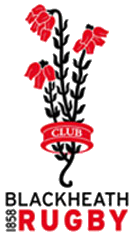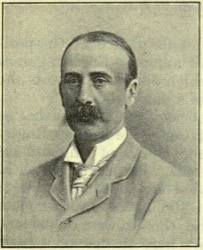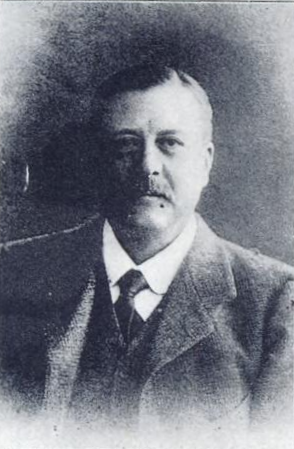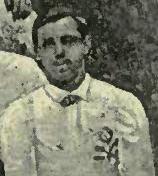
Blackheath Football Club is a rugby union club based in Well Hall, Eltham in south-east London.
Liverpool St Helens Football Club is an English rugby union team formed from the merger of Liverpool Football Club and St. Helens RUFC.
Guy's, Kings and St. Thomas' Rugby Football Club ("GKT") is the name given to the modern amalgam of three formerly distinct hospital rugby clubs each with a long history, having all been founded in the nineteenth century. The teams from Guy's Hospital and St Thomas' Hospital were the first to merge following the union of their respective Medical Departments. When King's College Hospital also merged in 1999 the King's College Hospital Rugby Football Club opted to remain separate and in so doing became an open rugby club that no longer represented the Hospital Medics. GKT is notable for having been part of the twenty-one founding members of the Rugby Football Union, and across its joint history has produced many international players.
Clapham Rovers was from its foundation in 1869 a leading English sports organisation in the two dominant codes of football, association football and rugby union. It was a prominent club in the late 19th century but is now defunct. The club played variously on Clapham Common, Tooting Bec Common and Wandsworth Common and wore a cerise and French-grey kit.

Engineer Captain Charles Gerald Taylor was a Royal Navy officer and Wales international rugby union player who played club rugby for Blackheath. He was the first Welsh international to be killed in action during World War I. Taylor was an all-round athlete, and at one time was the Welsh pole vault champion.

James Arthur Bush was an English sportsman who played first-class cricket for Gloucestershire County Cricket Club and represented England at rugby union.

Frederick Stokes was the first captain of the England national rugby union team, who played for and captained the team in the first three rugby internationals, all between England and Scotland. He was also the youngest president of the Rugby Football Union.
The Gipsies Football Club was a short lived 19th century rugby football club that was notable for being one of the twenty-one founding members of the Rugby Football Union, as well as producing a number of international players in the sport's early international fixtures.
Ravenscourt Park was a short lived 19th century English rugby union club that was notable for being one of the twenty-one founding members of the Rugby Football Union, as well as supplying a number of international players for the sport's early international fixtures.
The Blackheath Proprietary School was an educational establishment founded in 1830. In the 19th century, it had a profound influence on the game of football, in both Association and Rugby codes. In 1863, the school became one of the founders of The Football Association.
Henry Arnold Lawrence was a rugby union forward who played club rugby for Richmond F.C. and international rugby for England. He was the third captain of the England rugby team.
Charles Edward Wilson was an England rugby international and British Army officer who was killed during the First World War.

Dr. Lennard Stokes was a rugby union international who represented England from 1875 to 1881. He also captained his country on five occasions, notably in the first ever match against Wales. Like his brother Frederick Stokes, after captaining his country he went on to become the president of the Rugby Football Union.

Francis Luscombe was a rugby union international who represented England from 1872 to 1876. He also captained his country.
Alexander William Pearson was a rugby union international who represented England from 1875 to 1878. He was described as late as 1925 as "about as fíne a full back as ever played", and was the first Australian born rugby union international.
John Edmund Bentley was an English sportsman who played in the first international rugby football match in 1871, representing England as a halfback.
Charles William Sherrard, RE was a British Army officer and rugby union international who represented England from 1871 to 1872. Additionally, along with Lieutenant Charles Arthur Crompton RE, he was the first member of the armed forces to represent their national side.
Frank Whitmore Mellish, MC was a rugby union footballer who played internationally for England and South Africa. After his rugby career, he served as a selector for the South African team and as the manager of the 1951 Springbok tour of the British Isles and France.
Brigadier-General William Francis Howard Stafford was a British Army officer who served with the Royal Engineers in various campaigns in the late 19th and early 20th centuries. Towards the end of his career, he was in command of the South Irish coastal defences.

Sir Edward Cleather Fraser KCMG was a rugby union international who represented England in 1875 and prominent Mauritius based businessman.







